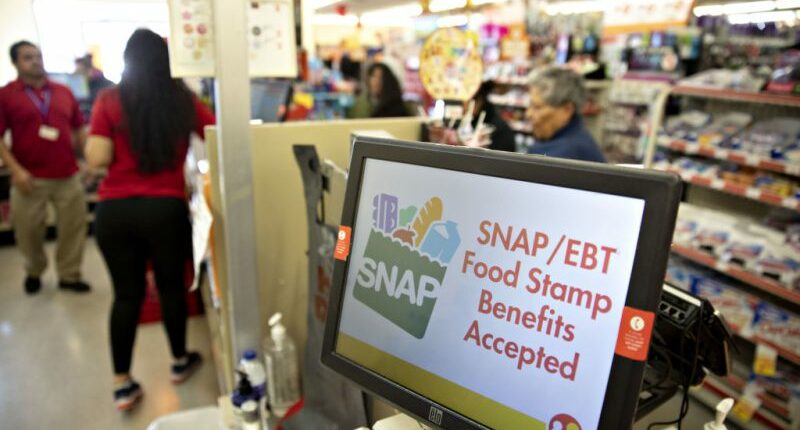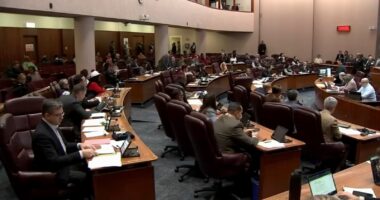Share this @internewscast.com

(NEXSTAR) – In a significant development just hours before a critical deadline, two judges ruled on Friday that the federal government must maintain funding for the Supplemental Nutrition Assistance Program (SNAP) during the ongoing government shutdown. However, individuals relying on food assistance should brace for potential delays in their benefits starting November 1.
This decision follows a month-long legal tussle since the government shutdown began on October 1. Initially, the United States Department of Agriculture (USDA) had planned to use emergency funds to sustain food aid throughout the shutdown. However, this stance was later altered by the Trump administration, which announced that the continuation of funding was not guaranteed.
The USDA, which oversees SNAP, had previously stated, “Bottom line, the well has run dry. At this time, there will be no benefits issued November 1.”
On Friday, a federal judge in Rhode Island mandated that a $5 billion contingency fund be utilized to keep the SNAP program operational. The challenge is that SNAP requires approximately $8 billion each month to function effectively.
Democratic state attorneys general and governors, who opposed the suspension of SNAP benefits, argued that an additional fund containing $23 billion should be tapped to ensure aid reaches the one in eight Americans eligible for the program. However, the courts granted the Trump administration the discretion to decide whether to fund SNAP fully or partially for November.
The judges have instructed the administration to provide an update by Monday on their planned course of action.
Will SNAP benefits be delayed in November?
Despite the courts’ rulings to fund SNAP (at least partially) through November, the immediate future was still unclear.
First off, the judges’ decisions could be appealed, posing a potential delay.
U.S. District Judge John McConnell ordered the USDA to distribute funds “timely or as soon as possible,” but it wasn’t clear how quickly EBT cards could be reloaded even if the money started flowing. That process can take one to two weeks, the Associated Press reports.
Households that qualify for SNAP typically see their benefits reload automatically on an Electronic Benefit Transfer (EBT) card, but each state has its own way of doing things. Many states reload benefits on a rolling basis, using recipients’ last names, case numbers or social security numbers to dole out benefits in batches.
In Arizona, for example, people whose last names start with A or B expect benefits to become available on the first of the month. Last names starting with Y or Z don’t expect new benefits until the 13th. Other states, like Connecticut, have a schedule that pays everyone in the first three days of the month. (See the schedule for your state’s benefits issuance here.)
In practice, that means many families are expecting EBT cards to be reloaded on Saturday, and even a 24-hour delay will force them to find other ways to get food. But others have weeks until they expect to get paid, and may have enough money left on their cards to tide them over.
To make things even more complicated, it’s not even clear that states would stick to their normal schedules if or when funding becomes available. Doing so could risk running out of money before everyone gets their allotment.
The situation is particularly chaotic if the federal government decides to only use the smaller $5 billion contingency fund to operate SNAP, which wouldn’t be enough to pay everyone out through the end of November.
“Such a partial payment has never been made — and for good reason,” the Trump administration argued in court filings. “It would require each state to recalculate the benefits owed based on the reduced funds available. USDA estimates that such a calculation, involving complicated system changes and processes dictated by statute and regulation, would take weeks, if it can be done at all.”
As of Friday afternoon, the USDA’s website had not been updated with next steps following the two rulings.

















